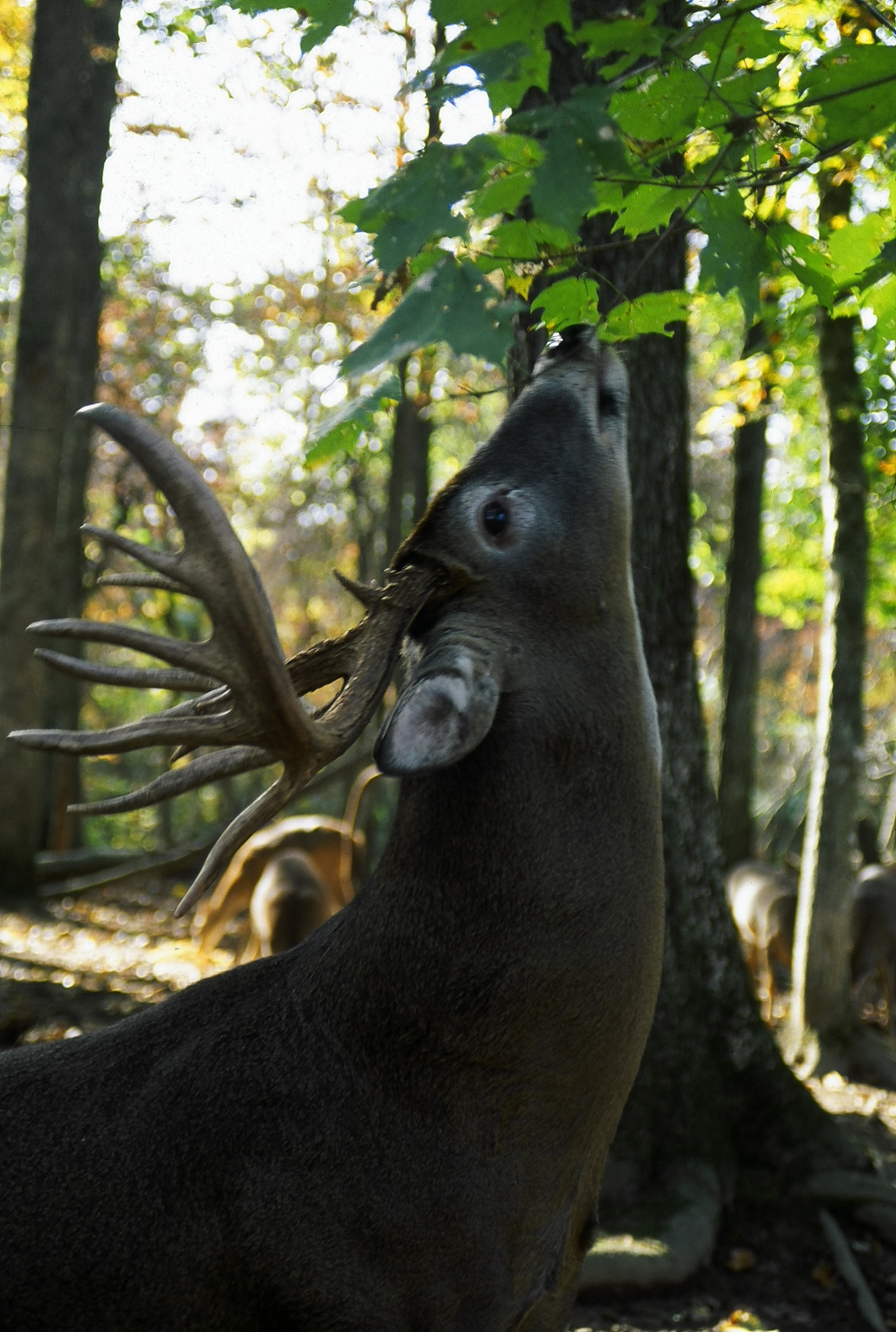Mock scrapes — in July? If that sounds unusual, you should know that Fred Abbas also communicates with deer and, most surprisingly, expects them to respond. “We developed a system of mock scrapes years ago so we can hunt trophy bucks in Michigan. We have that procedure down to a science,” Abbas says. “We make an average of ten mock scrapes beginning July 1 and have developed a special attractant scent.” Fred and his son take huge Michigan whitetails each season using these tactics.
 Abbas believes that establishing a mock scrape is like talking to a deer. “If the buck feels comfortable, it will enlarge the scrape and tell you it’s comfortable,” he says. “If it does not, then the buck rejects the site and says no.” If the buck accepts and enlarges the scrape, Abbas “asks” other questions such as: Which trail do you like the best?Where do you come from? How big are you? Deer behavior answers other questions.
Abbas believes that establishing a mock scrape is like talking to a deer. “If the buck feels comfortable, it will enlarge the scrape and tell you it’s comfortable,” he says. “If it does not, then the buck rejects the site and says no.” If the buck accepts and enlarges the scrape, Abbas “asks” other questions such as: Which trail do you like the best?Where do you come from? How big are you? Deer behavior answers other questions.
Typically, a mock scrape begins to look like the hub of a wheel with trails leading in and out like spokes. Although motion-sensitive cameras provide some answers, Abbas goes low-tech, employing one of the earliest scouting techniques — raking. Using a standard garden rake, he smooths out a patch of soil along each trail and puts water in it for extra printing power. By examining the tracks, the number of deer, size of deer, and their frequency can be determined. “Any time I find a track longer than 3 ¾ inches I get excited,” says Abbas.
Although the mock scrape technique is excellent at drawing big bucks, the Abbas  family does not hunt over them. Rather, they stay at least 100 yards away from the spot so that a spooked deer will not associate the scrape with danger. “If a buck is spooked at the scrape or mineral site, he may become nocturnal,” Abbas says. “But if it’s a distance away, the deer will often loop around and return to the scrape.”
family does not hunt over them. Rather, they stay at least 100 yards away from the spot so that a spooked deer will not associate the scrape with danger. “If a buck is spooked at the scrape or mineral site, he may become nocturnal,” Abbas says. “But if it’s a distance away, the deer will often loop around and return to the scrape.”
Tell us what you think in the comments section below.









![The Best Deer Camp Chili [VIDEO] Deer Chili Ingredients, Tomatoes, Chili Spices](/wp-content/uploads/2015/10/Deer-Chili-Deer-Camp-Recipe-218x150.jpg)








![How to Call Elk Early in the Season [VIDEO]](/wp-content/uploads/2016/08/byers003-218x150.jpg)




![Idiots Disturb Hunter: How Would You Have Handled It? [VIDEO]](/wp-content/uploads/2015/10/DSC00110-e1474487693878-100x70.jpg)
![Albino Buck Shocked to Shed His Antlers [VIDEO]](/wp-content/uploads/2015/10/AlbinoDeer-100x70.jpg)